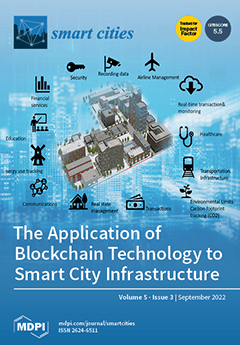Science and technology transform the frontiers of knowledge and have deep and powerful impacts on society, demonstrating how social reality varies with each era of the world. As a set of fictional representations of technologically driven future worlds, the Metaverse is increasingly shaping
[...] Read more.
Science and technology transform the frontiers of knowledge and have deep and powerful impacts on society, demonstrating how social reality varies with each era of the world. As a set of fictional representations of technologically driven future worlds, the Metaverse is increasingly shaping the socio-technical imaginaries of data-driven smart cities, i.e., the outcome of radical transformations of dominant structures, processes, practices, and cultures. At the core of the systematic exploration of science and technology is the relationships between scientific knowledge, technological systems, and values and ethics from a wide range of perspectives. Positioned within science of science, this study investigates the complex interplay between the Metaverse as a form of science and technology and the wider social context in which it is embedded. Therefore, it adopts an analytical and philosophical framework of STS, and in doing so, it employs an integrated approach to discourse analysis, supported by a comparative analysis of the Metaverse and Ambient Intelligence. This study shows that the Metaverse as a scientific and technological activity is socially constructed, politically driven, economically conditioned, and historically situated. That is, it is inherently human and hence value-laden, as well as can only be understood as contextualized within the socio-political-economic-historical framework that gives rise to it, sustains it, and makes it durable by material effects and networks. This view in turn corroborates that the Metaverse raises serious concerns as to determinism, social exclusion, marginalization, privacy erosion, surveillance, control, democratic backsliding, hive mentality, cyber-utopianism, and dystopianism. This study argues that, due to the problematic nature of the Metaverse in terms of its inherent ethical and social implications, there need to be more explicit processes and practices for enhancing public participation and allowing a more democratic public role in its shaping and control, especially early in the decision-making process of its development—when the opportunity for effective inputs and informed choices is greatest. The novelty of this study lies in that it is the first of its kind with respect to probing the link between the Metaverse and data-driven smart cities from an STS perspective. The main contribution of this study lies in deepening and extending social scientific critiques and understandings of the imaginaries of data-driven smart cities based on the analysis and evaluation of the Metaverse and the warning signals and troubling visions it conveys and animates in order to help construct desirable alternative futures for the greater good of all citizens. The ultimate goal is to structure the Metaverse in ways that are morally acceptable and collectively the most democratically beneficial for society.
Full article





